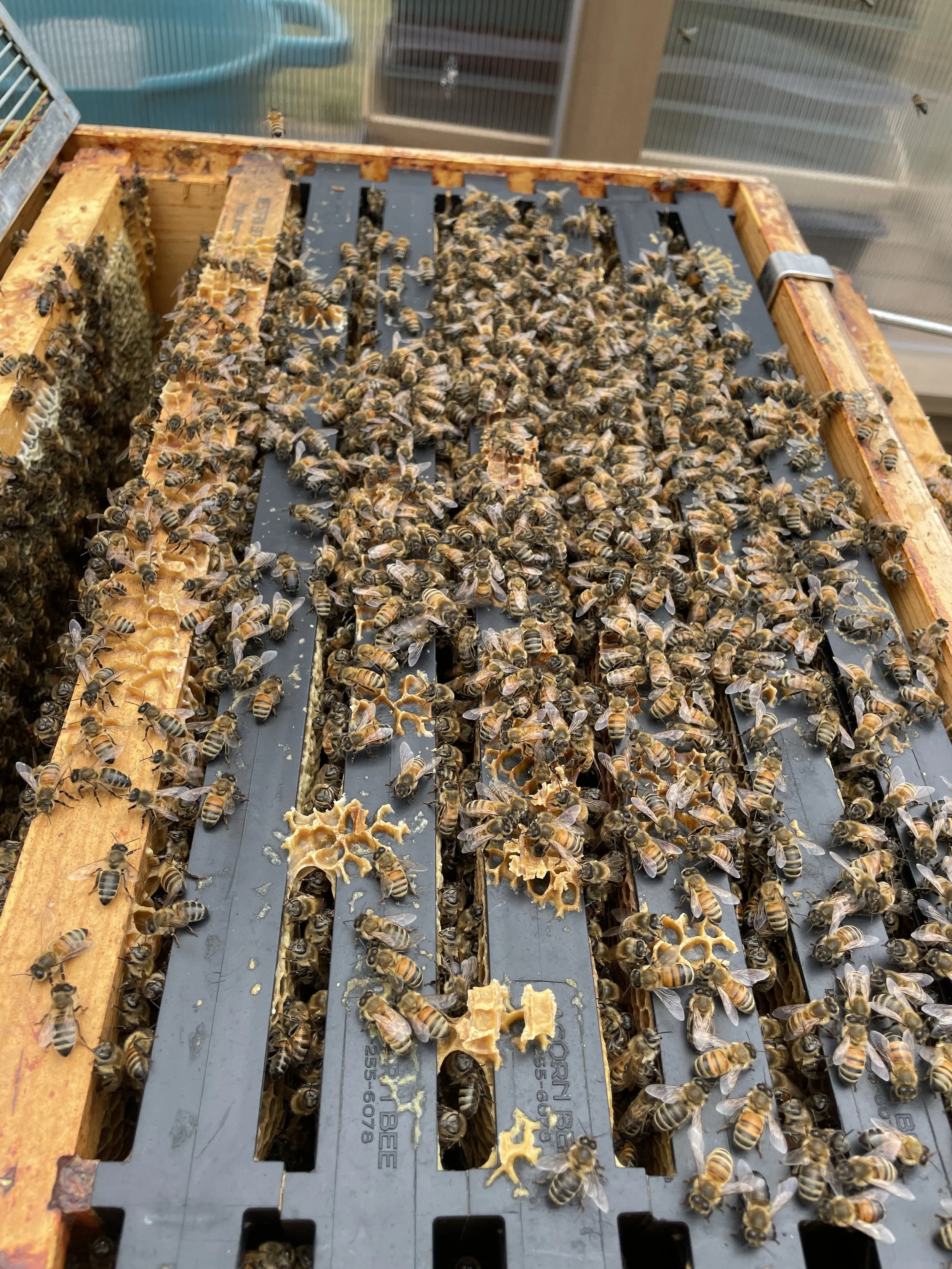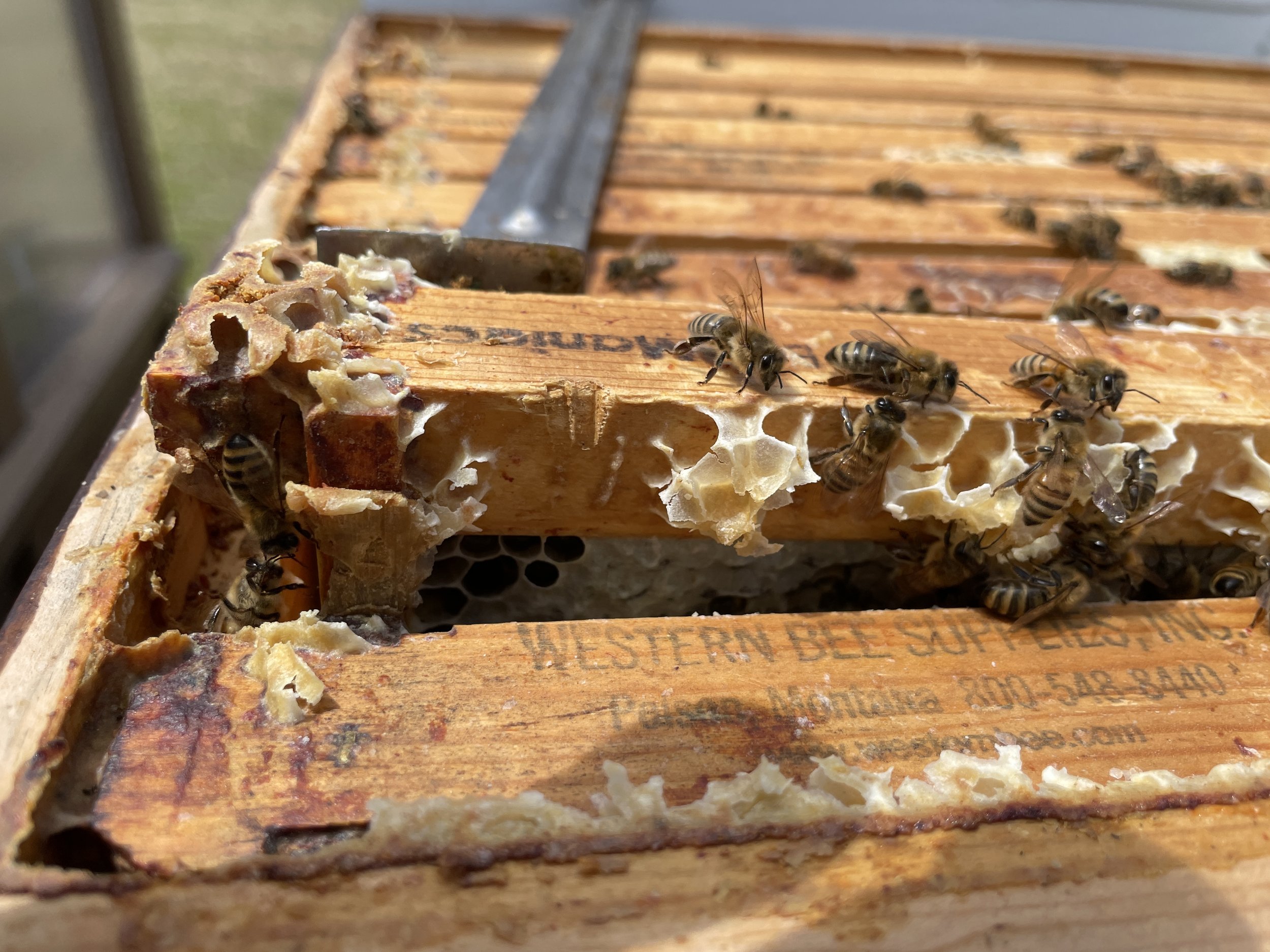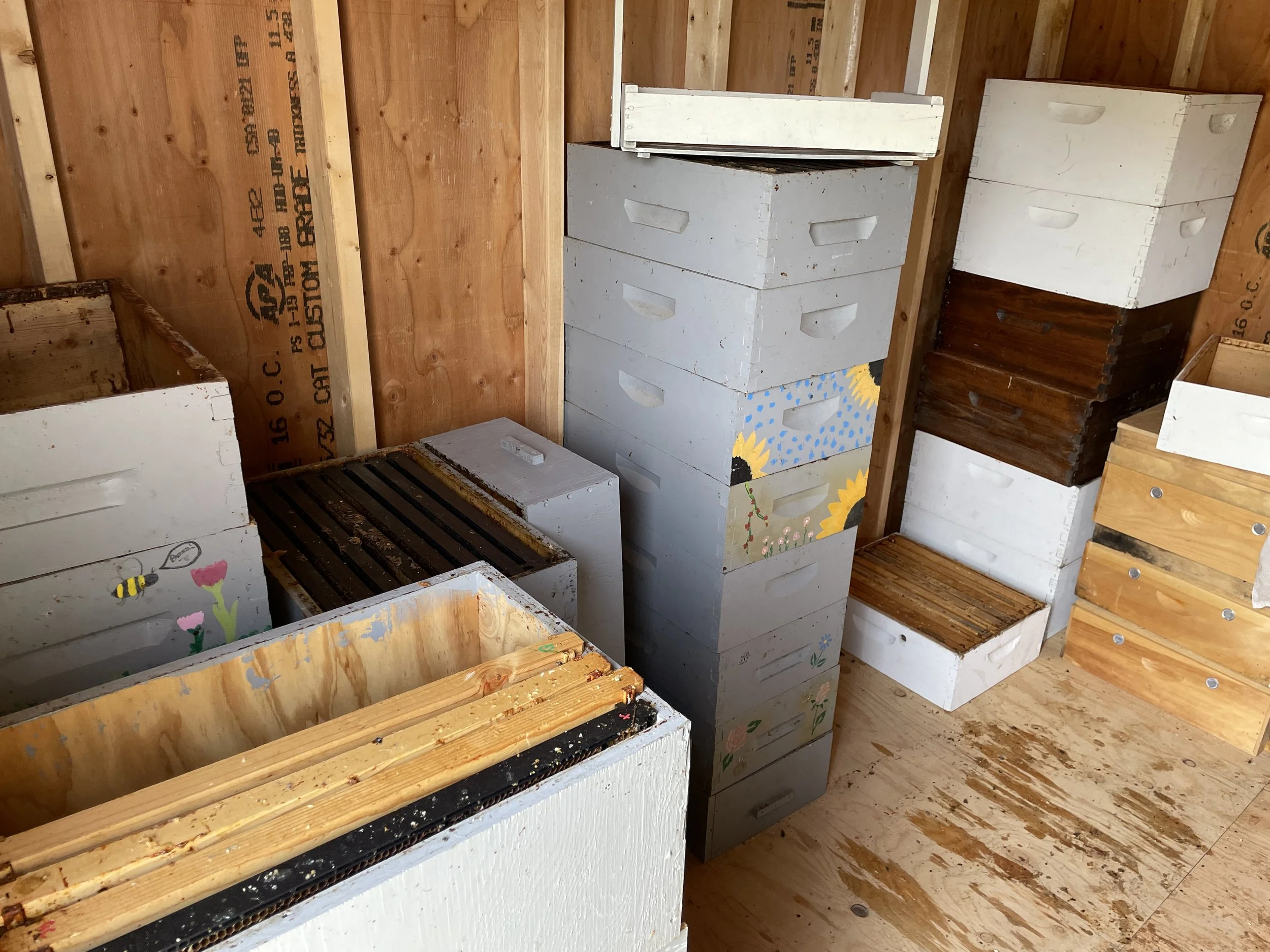Midsummer Hive Check
My beekeeping motto this year is “Noli tangere.”
“Noli” is a negative imperative meaning “do not.”
“Tangere” is the infinitive form of “to touch.”
Together, “Noli tangere” translates literally as “Do not touch.” It’s often used figuratively to mean “keep your hands off” or “do not interfere.”
This low-maintenance approach is a reaction to my last year’s motto, which was “Desperately feed them 50# bags of sugar all year.” 2024 was so exhausting and pretty futile. It seemed like none of the 5 hives were acting anything close to normal.
So this year, the two hives that wintered over successfully were so ornery in the spring, I knew they had the right spirit for my no-touch 2025. I’m happy to report they are both super docile now, and both seem to have a lot of bees and are making at least some honey. I didn’t feed them a drop of sugar water in spring (they still had plenty of honey), and I put on their honey supers quite early (the 2 boxes on top that are just for honey to be taken, not their honey to eat, nor their eggs.) I added one of the supers to the left hand hive today, because they had pretty much filled up their other super box. I can’t say I saw a ton of pollen coming in, and I didn’t dig into the lower boxes to check on the brood (egg) situation. But they were busy and have plenty of honey, so hands off it is!
I’ll still have to check my fall mite treatment supplies, because I don’t intend to reopen these hives until the end of August, when you remove the supers, extract the honey, and treat for mites so they have time to bulk up their own honey supplies before winter.
I use an unusual set-up, though if you hang around beekeeping for any period of time you realize there is really no such thing as a “standard” set-up. The deeper white boxes on the bottom of the hive configuration are called “deeps”. Typically, you would have two deeps as the bottom of your hive, containing the frames that hold the brood/eggs and also the honey stores that are for the bees to eat. But as you can see, I use only one super and then two “supers”, which are the regular size boxes. I started doing this simply because I ended up with tons of super boxes and not that many deeps. Also, Montana stained these supers so nicely two years ago, and I like the mixture of stained and painted boxes. So in the winter, both of these hives will have three boxes - one deep and two supers - all for their own space to keep warm and store their supplies. I think one of the reasons this configuration has worked for me is that it offers a bit more ventilation for the bees in the winter, though someone else would say it means they have a slightly larger space to keep warm. Frankly, there isn’t much difference between two deeps and one deep+two supers. And the bottom line is I already made my decision, so this is what we stick with! It is not easy to change configuration once they have laid their brood in a certain size box.
This metal grate is placed between the bees’ home and the honey section portions of the hive; it is called an “excluder”, because the big queen bees can’t fit between the metal bars and therefore never ventures up into a honey super (which we are going to extract the honey from) to lay their eggs. Most experienced beekeepers don’t use them, because they find they don’t need them - queens stay in the lower part of hives on their own. But with my crazy configuration, I figure it can’t hurt!
Some of the frames are wood, and some are plastic. Every once in awhile we get a hive that HATES the plastic frames, but this one doesn’t seem to care. I had some white plastic frames at one point, and I swear every hive hated them all.
I didn’t realize my glove had blocked this photo, but I kept it because I love to see the different colors of pollen and also the capped vs. uncapped honey.
This is a better picture of the different colored pollen. The large lumpy wax comb along the bottom could be the residue from “Queen Cups”, which they create when their queen is weak and needs to be replaced. They would have held a potential “Princess” from which the hive chooses. Or they could just be waxy lumpy areas on the bottom of the frame!
Don’t see any pollen on their wings, but there’s lots of coming and going.
I started pulling out this frame from the left hive' and immediately could tell it was full of honey, so that is why I added another empty honey super to the left side.
Happy enough beekeeper for July!
We have these handy 5-gallon bucket liners for our beekeeping equipment and also versions for our gardening equipment. The liner just goes around the edges and has all sorts of pockets and holders, and then the bottom of the bucket is just plastic for easy cleaning.
Quite a lot of beekeeping equipment basically filling the dog kennel storage room. Now that I know I like having TWO hives, I can probably clean up and sell a lot of the excess supplies. Spring is the hot time to sell, as all the new beekeepers have to buy a LOT of equipment to get started.













